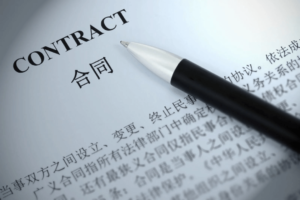Table of Contents
ToggleIntroduction
When doing business with China, it’s essential to understand the applicable import taxes. Import taxes can significantly impact your costs and profitability, and China has a complex tax system. This article provides a step-by-step guide to calculating import taxes in China.
Step 1: Identify the HS Code
The first step in calculating import taxes is to identify your product’s Harmonized System (HS) code. The HS code is a standard international system used to classify traded products. It determines which tax rates will apply to your product.
You can use the online HS code lookup tools to find your product’s code. These tools are available on various platforms, such as the World Customs Organization’s (WCO) website or the China Customs official website.
Step 2: Determine the Tax Categories
In China, three types of taxes may apply to imported goods: Customs Duty, Value Added Tax (VAT), and Consumption Tax. Not all goods are subject to all three, and rates can vary. The tax category and rate are generally decided based on the product’s HS code.
- Customs Duty: This tax is levied on imported goods into China. Rates can vary from 0% to 35%, depending on the type of goods.
- Value Added Tax (VAT): Almost all goods are subject to VAT, which is typically 13% or 16%. VAT is calculated on the customs value plus the customs duty.
- Consumption Tax: This tax is applied to certain goods deemed as luxury or non-essential items like tobacco, alcohol, jewelry, cosmetics, and cars. The rate varies depending on the specific item.
Step 3: Calculate the Customs Value
The customs value is the value of your product plus any shipping, insurance, and related costs up to the point of import. It’s based on your goods’ “Cost, Insurance, and Freight” (CIF) value. This value is crucial because the import taxes are calculated based on it.
Step 4: Calculate the Taxes
You can calculate the import taxes once you know the tax rates and customs value.
Here’s how:
- Customs Duty = Customs Value x Customs Duty Rate
- Value Added Tax (VAT) = (Customs Value + Customs Duty) x VAT Rate
- Consumption Tax: This can be a little more complex due to the different calculation methods, depending on the product. One common method is: Consumption Tax = (Customs Value + Customs Duty) / (1 – Consumption Tax Rate) x Consumption Tax Rate
Step 5: Consider Tax Exemptions and Reductions
China provides certain tax exemptions and reductions for some goods or under specific circumstances. For instance, goods for scientific research, technological advancement, and education may be eligible for tax reductions. It’s important to check whether your goods fall under any such category.
Step 6: Consult a Professional
China’s tax regulations can change, and they can also be complex. If you’re unsure about any steps, it’s recommended to consult with a professional who specializes in Chinese import tax law. They can help ensure you’re correctly calculating the taxes and taking advantage of any potential tax benefits.
Conclusion
In conclusion, understanding and calculating import taxes in China is vital to doing business there. This step-by-step guide provides a basic understanding of the process, but remember that specific situations or changes in the law may affect the taxes on your goods.
FAQ
1. How are import taxes different for different goods?
Import taxes are calculated based on the type of product you’re importing, its HS code, and its CIF value. Different products have different customs duties, VAT, and consumption tax rates, which can greatly influence the final tax amount.
2. How often do import tax rates change in China?
China’s import tax rates can change in response to various economic factors, changes in law, or trade agreements. It’s essential to keep up-to-date with the latest information by consulting with a professional.
3. Can I get an exemption from import taxes in China?
Certain goods and specific circumstances can qualify for tax exemptions or reductions in China. For example, goods for scientific research, technological advancement, or education might be eligible for tax reductions. However, this does not apply to all goods, so you should check the current regulations.
4. What if I misclassify my product’s HS code?
Misclassifying your product’s HS code can result in paying the wrong amount of tax, leading to financial loss or potential legal issues. Inaccurate classification could lead to customs disputes and delayed shipments. Therefore, it’s crucial to correctly identify your product’s HS code.
5. Are import taxes the same for all provinces in China?
While import taxes are generally consistent across China, different regions may have additional local taxes. Furthermore, China has several Free Trade Zones (FTZs) with different tax regulations. Checking local tax laws or consulting with a tax professional is advisable.
6. How is the customs value determined?
The customs value is determined based on the goods’ CIF (Cost, Insurance, Freight) value. This includes the value of your goods, the cost of insurance, and the freight or shipping costs to the point of import.
7. How can I confirm the import tax rates for my goods?
You can confirm the tax rates for your goods by checking the official China Customs website or consulting with a tax or customs expert. The Harmonized System (HS) Code will help you determine the relevant tax rates.
Contact us if you need legal help in China, help with background investigation of Chinese companies, protecting patents, trademarks, and verification of contracts to the law in China, etc.
If you require our assistance or have further questions about our services, please do not hesitate to contact our Customer Relationship Manager, Jan Erik Christensen, at janerik@ncbhub.com. We look forward to hearing from you and helping your business succeed in China.








